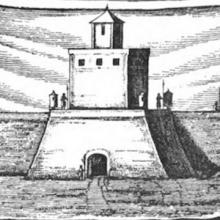Women

Long Teaching Module: Gender and Health in Latin America, 1980-2010
Several decades have passed since the conclusion of what the United Nations addressed as the “Decade for Woman” (1975-1985). In many regions of the world, patriarchal relationships between men and women have been toned down, and hierarchies in gender roles have become less rigid.
Long Teaching Module: North African Women and the French Empire, 1850-2000
From the 18th century on, expanding European imperialism across the globe began to pose acute challenges to states and societies throughout Asia and Africa. These challenges held enormous repercussions for indigenous women of all social classes, religions, and ethno-racial backgrounds.

Long Teaching Module: Women in the British Empire, 1800-2000
This module will help students explore the importance of women—both British women and women from British colonies—to the British Empire, as well as their importance in developing an understanding of Britain as an imperial power to a domestic audience at home.

Long Teaching Module: Cultural Contact in Southern Africa
The Portuguese explorer Bartholomew Diaz first saw the Cape of Good Hope—the southernmost point in Africa—in 1488. No attempt was made by a European nation to establish a permanent settlement there, however, until 1652, when the Dutch East India Company (VOC) set up a refreshment station.

Long Teaching Module: Women in the Early Modern World, 1500-1800
Talking about an “early modern world” allows us to investigate the interconnectedness of world cultures, as opposed to their isolation.

Gertrude Bell Project
In the teaching of world history, this site lends itself to exploring both the themes of women travelers and their writing, as well as the timely topic of European intervention in the Middle East, in particular Iraq.Long Teaching Module: Women in the Islamic World, 600-1600
From its inception in the early 7th century up to the present day, women have played a vital role in shaping Islamic history.
Long Teaching Module: Writers of the Heian Era
Japanese cultural history is rather unique because it includes writings by women from the Heian Era (794-1185 CE) among its earliest works of important literature.

Renunciation case against Gertrudis de Escobar, Mexico, 1659
This document is the proceedings of an 1659 Inquisition case brought against a 14 year old girl. The girl, named Gertrudis de Escobar, was accused of the crime of renouncing God. Gertrudis de Escobar was the child of a black person and a white person, termed at that time a mulata.

Census of 1910 tuberculosis data
Census data is one way for historians to better understand the lives of average people who otherwise might be largely invisible to scholars. This excerpt from the 1910 census conducted by the Hapsburg Monarchy.